To search for lab-grown diamonds, view a list of available diamonds on our original website page.
What are lab-grown diamonds?
Lab-grown diamonds are synthetic diamonds grown in a laboratory to replicate natural diamonds mined from the Earth.
The process uses specialists equipment to convert carbon atoms into the crystal form of a diamond.
Most importantly, these cultured diamonds have the same optical, physical and chemical properties as natural diamonds.
Manufacturing processes recreate the natural conditions under which natural diamonds formed billions of years ago.
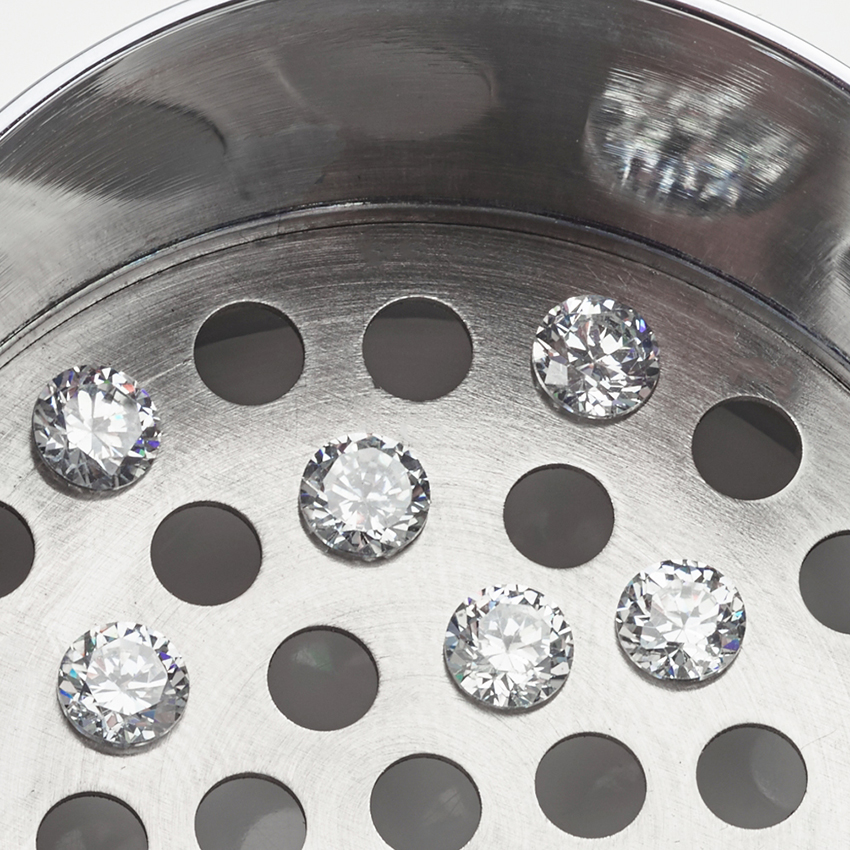
In appearance and physical composition, lab-created diamonds look identical to natural diamonds. In fact, natural and lab-created versions look identical. Furthermore, they provide the same high-quality gemstone, traditionally set into engagement rings with identical physical properties including hardness.
Just like natural diamonds, polishers cut lab-grown rough diamonds into all diamond carat-weights, colours, and clarities. Lapidiarists cut lab diamonds into a variety of diamond shapes in exactly the same way as a natural diamond.

Lab-grown certified diamond with IGI report noting the diamond has been laboratory grown.
Until recently, lab-grown alternatives to natural diamonds were shunned by the jewellery industry. In fact, many jewellers stressed that they would never stock lab-grown alternatives. At the same time, many diamond merchants made similar statements.
In contrast, today many of our existing diamond suppliers now stock lab-grown inventories listed alongside natural diamond stock.
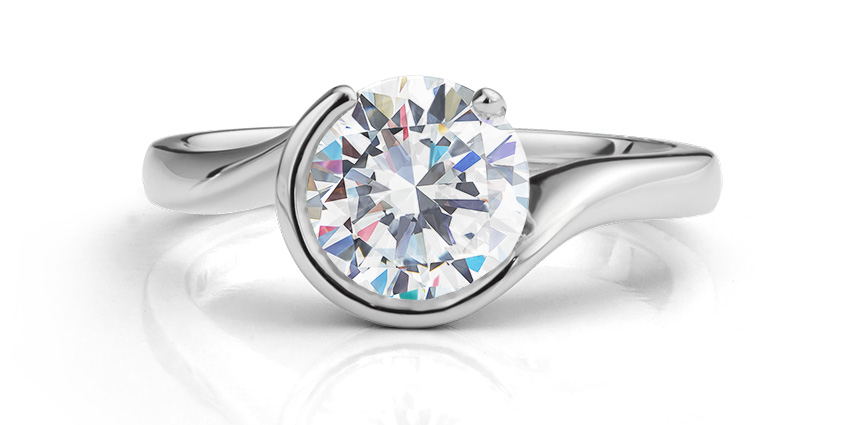
Are lab-created diamonds real diamonds?
Lab-grown diamonds are real diamonds with the same physical, chemical and optical properties as natural mined diamonds.
To both the expert and untrained eye, they are impossible to tell apart.
At this point, we must emphasize that lab-created diamonds are not diamond simulants.
To clarify, diamond simulants are natural or artificial gemstones with similar properties. As a result, diamond simulants look like diamonds but are not diamonds.
Lab-grown diamonds vs natural diamonds
The significant difference between a natural diamond and a lab-grown diamond involves trace amounts of nitrogen present in natural diamonds but absent in created diamonds. Gemmologists can use specialised equipment to determine if a diamond is natural or created.
Why are man-made diamonds popular?
Lab-grown diamonds make a popular choice for consumers. Firstly, grown diamonds provide an ethical choice. But, a key factor comes from their (much) lower price. Both reasons support the use of grown diamonds for ethical diamond jewellery.
The market for ‘made’ diamonds and their interest continues to increase as seen in the following chart.
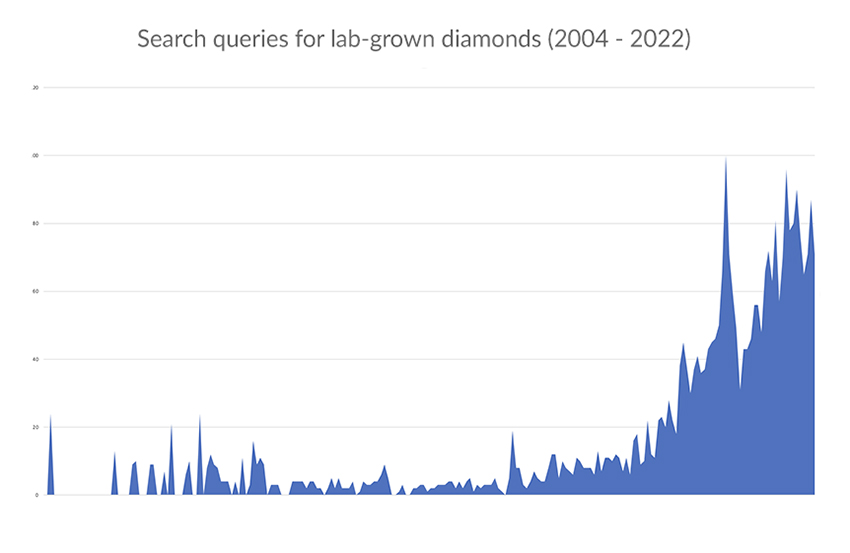
Are grown diamonds ethical?
Many buyers seek out man-made diamonds for two main reasons. Firstly, owing to inhumane acts surrounding conflict diamonds. Secondly, due to the environmental impact of mining diamonds.
In fact, many Millennials and Gen-Z buyers continue to move away from mainstream diamonds.
But what about the environmental impact of grown diamonds?
“A study comparing the environmental impact of grown diamonds and mined diamonds depicts that growing diamonds cause a significantly less environmental impact than mining diamonds. There are several aspects of environmental impacts, such as air pollution, water usage, energy usage, etc. There is also a significant level of human impact as well in the process of diamond production.”(Source: Frost & Sullivan).
With new technology, some of the World’s grown diamond manufacturers create diamonds with renewable energy with carbon-neutral credentials. Diamonds are created using diamond seeds.
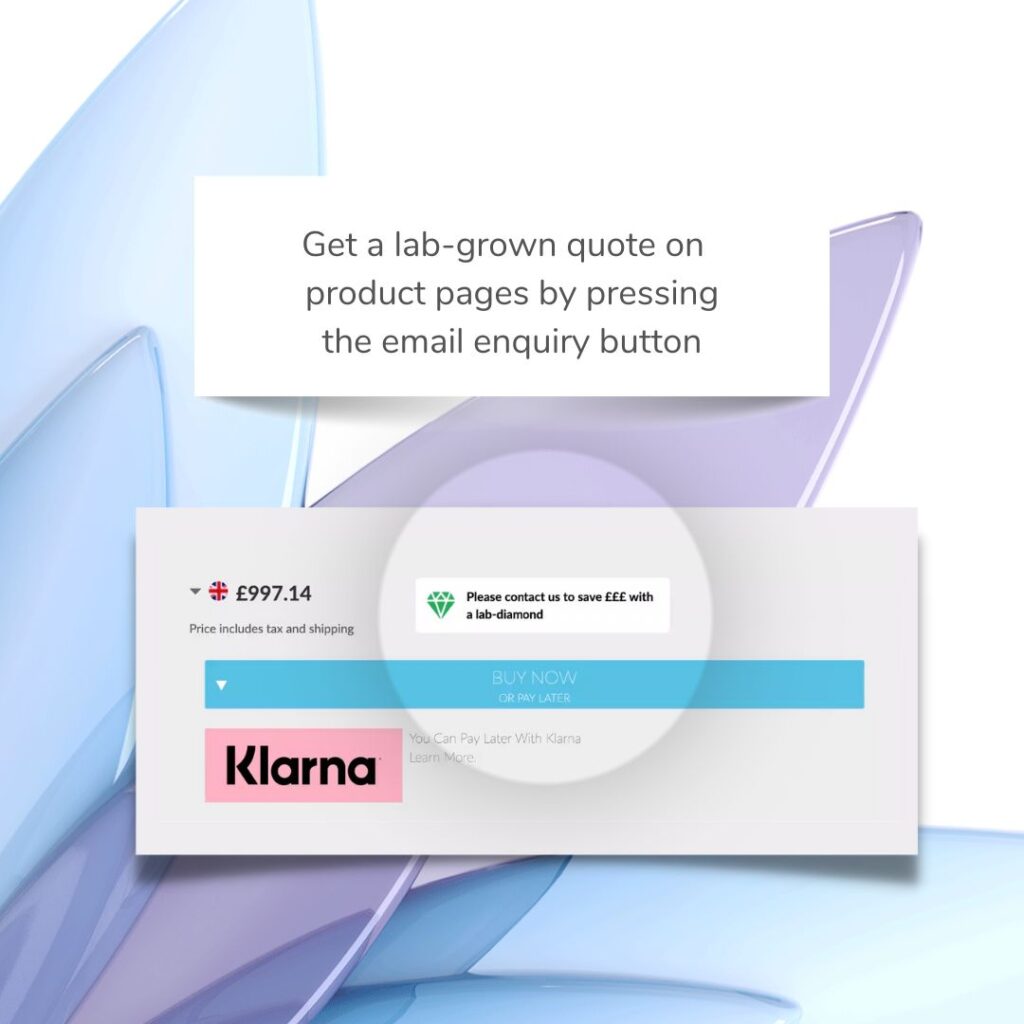
How are lab-grown diamonds created?
There are two main ways to create a diamond artificially. Both start the process with a seed diamond.
High-Pressure High-Temperature (HPHT)
The seed diamond is a sliver of a diamond. The first known technique used High Pressure High Temperature (HPHT) with the seed added to pure graphite carbon, subjected to high temperatures around 1,500 degrees Celcius, with pressures of approx. 1.5 million pounds per square inch.
Chemical Vapour Deposition (CVD)
Another, more recent technique uses Chemical Vapor Deposition (CVD). Firstly, a technician places a seed diamond into a sealed chamber filled with carbon-rich gas heated to around 800 degrees Celcius.
Next, the gases “adhere” to the seed. Carbon atom by atom, the seed grows into a rough diamond.
Finally, the grown diamond goes through cutting and polishing in much the same way as a natural diamond.
How much do lab-made diamonds cost?
To begin with, grown diamonds cost considerably less than natural diamonds. As a result, the growth of laboratory-grown diamonds posed a serious threat to natural diamond producers, DeBeers. For this reason, DeBeers entered the lab-grown market.
De Beers maintains its participation aims to create a clear divide between lab-grown diamonds and natural diamonds.
But, like natural diamonds, man-made diamonds vary in cost depending on the diamond’s size, colour and clarity. Also, prices vary from supplier to supplier. Also, prices vary from retailer to retailer.
Comparing the price of lab-grown and natural diamond engagement rings.
Recently, we compared the average price of an engagement ring (£2000) between different retailers.
At the same time, we compared two diamond solitaire engagement rings, both in 950 Platinum. One set with a natural diamond and one set with a lab diamond.
Platinum, single stone 0.40-carat diamond ring. G colour. SI1 clarity. Very Good Cut. GIA certified. £2000.
Platinum, single stone 0.90-carat lab-grown diamond ring. F colour. SI1 clarity. Excellent Cut. GIA certified. £2000.
In summary, the lab-created option worked out to be approximately 45 – 50% cheaper than a natural diamond.
Where to buy a man-made diamond?
The popularity of lab-grown diamonds means that consumers now have a fantastic choice when it comes to sourcing their diamonds. In fact, some organisations grow a diamond to order!
Most organisations provide information on the process of manufacturing. For example, CVD or HPHT.
Example of a lab-grown diamond engagement ring.
The following video shows a lab-grown diamond set into a simple ring design. A real diamond shows no visible difference with the same optical properties. We create most of our designs as lab diamond rings in any choice of precious metal.
The size, colour and clarity of lab-grown diamonds.
Lab-created diamonds exist in a wide range of colours. In addition, polishers cut diamonds into all shapes and sizes ranging from 1mm sizes up to 5-carat sizes.
Diamonds above 0.30 carats typically include a diamond certificate from the International Gemological Institute (IGI). At the same time, most include excellent or even ideal proportions as standard.
Lab-made diamonds laser inscribed with the certificate number provide an easy route to identification.
How to identify a lab-grown diamond from a natural diamond?
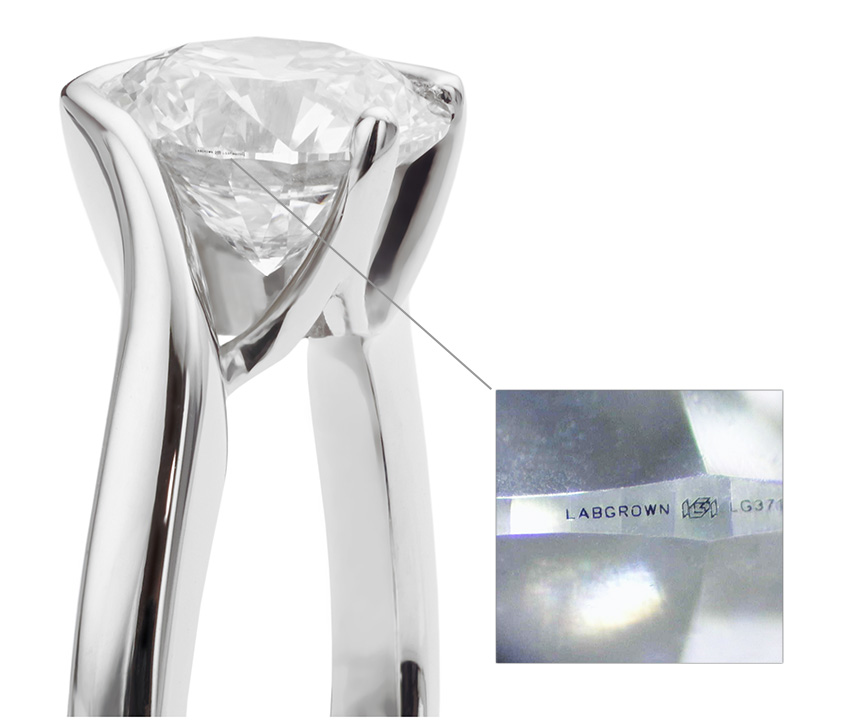
Photograph showing the lab-grown diamond inscription on the side of a recent commission.
Under a lens, our lab-grown diamonds reveal a unique laser inscription. Applied to the outer girdle, the certificate number and reference appear.
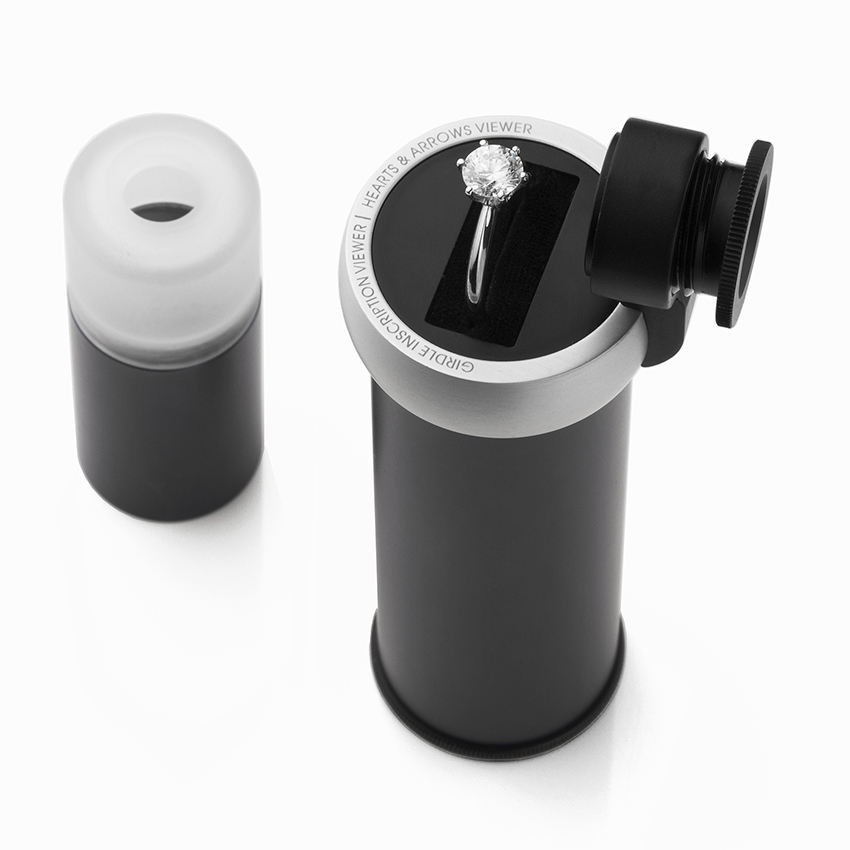
To the naked eye, this inscription remains invisible. But this appears under the lens of an inscription reader, loupe, or magnifying lens.
Looking at lab-grown diamonds under the lens
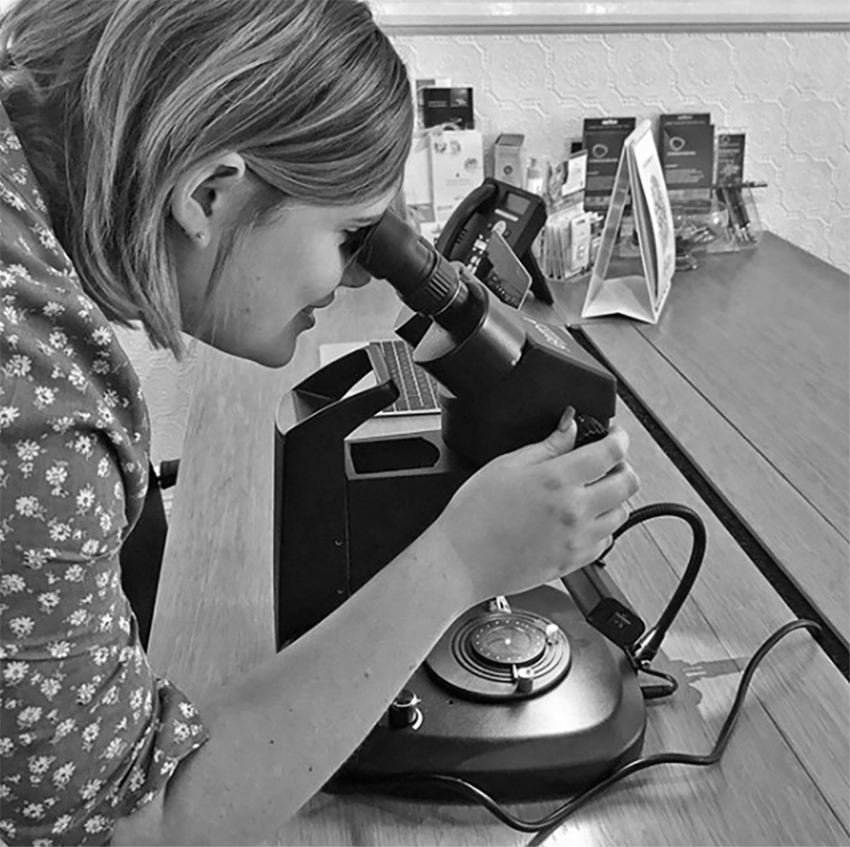
Emily, our assistant manager demonstrates the gem microscope to look at a lab-created diamond.
About Mark Johnson
My name is Mark and I'm founder at Serendipity Diamonds. I have 30 years or experience in polished diamonds and jewellery. Today, I work with an expert team in our Isle of Wight jewellery showroom located in Ryde. Most of my work involves helping clients in our showroom, working on our two websites and photographing jewellery commissions.



